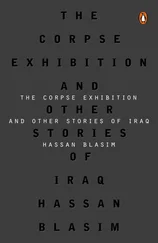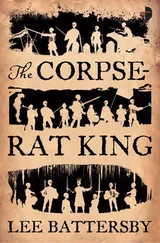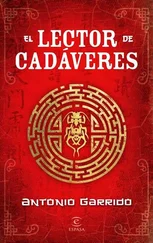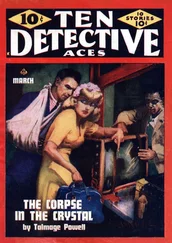For a number of reasons, I was unable to attend, but Dr. Mandal was kind enough to send me an extensive report summarizing the main talks. Primarily these were on toxicology, forensic pathology and psychology, criminology, and molecular genetics. But the one that immediately drew my attention was on the most recent advances in spectrophotometry, or findings in the field of mitochondrial DNA analysis, focusing mainly on its historical origins. Specifically, it was an in-depth study of the person considered worldwide to be the founding father of this forensic discipline. A man from medieval Asia. The Chinese Cí Song.
Immediately, I knew I had it. My heartbeat quickened. I abandoned what I’d been working on and gave my all to a novel that was truly worth the trouble. The extraordinary life of the world’s first forensic scientist. An epic and fascinating story set in exotic ancient China.
The documentation process was exceedingly arduous. There were no more than thirty paragraphs in about a dozen books on Cí Song’s life, and these, though they opened the door for a fictional account, limited the chances of a biographically accurate rendering. Luckily, the same could not be said of his own output; his five treatises on forensics, all published in 1247 as the Hsi yuan lu hsiang I ( The Washing Away of Wrongs ), have endured through translations in Japanese, Korean, Russian, German, Dutch, French, and English.
With the help of my friend Alex Lima, a writer and adjunct professor at Suffolk County Community College, I obtained a facsimile of the five volumes edited by Nathan Smith of the Center for Chinese Studies at the University of Michigan, from a translation by professor Brian McKnight that includes a useful preface from the Japanese edition of 1854.
The first volume listed the laws affecting forensic judges, the bureaucratic procedures employed, the number of investigations to be carried out per crime and who was in charge of carrying them out, jurisdictions, behavioral protocol for inspectors, the drawing up of forensic reports, and the punishments forensic experts might receive if they made incorrect judgments. This first volume also advocated using a standard procedure when it came to examining corpses, including stipulating the necessity of sketching the various findings on palimpsest sheets.
The second volume detailed the stages of corpse decay, the variations in these according to the time of year, the washing and preparation of corpses, the examination of disinterred corpses, the exhumation of corpses, methods for examining corpses at an advanced stage of decomposition, forensic entomology, the analyses to be carried out in the case of a strangling or suffocation, the differences when looking at female corpses, and the examination of fetuses.
The third volume looked in depth at the study of bones, wound traces on skeletons, bodily vital points, suicides by hanging, simulated suicides, murders, and drownings.
The fourth volume covered deaths caused by punches or kicks or by blunt instruments used for stabbing or for cutting, suicides committed using sharp objects, murders by several wounds in which the death blow needed to be identified, cases of decapitation or cases in which the torso or the head were not present, burn deaths, deaths caused by spillages of boiling liquids, poisoning, deaths caused by hidden illnesses, deaths caused by acupuncture or moxibustion, and the registration of deaths by natural causes.
Finally, the fifth volume dealt with investigations into the deaths of prisoners; deaths caused by torture; deaths caused by falling from great heights; deaths caused by crushing, asphyxiation, horse or buffalo stampedes, and crashes; deaths by lightning strikes; deaths caused by wild beast attacks; deaths by insect, snake, or reptile bites; deaths due to internal wounds because of overeating; deaths due to sexual excesses; and, finally, the procedures for the opening up of corpses as well as the methods for dispersing stench and carrying out resuscitations.
All in all, it was a veritable array of techniques, methods, instruments, preparations, protocols, and laws, added to the numerous forensics cases solved by Cí Song, which enabled me to construct a story that not only had passion but also would be absolutely faithful to reality.
I spent a year researching and compiling information on contemporary political, cultural, social, judicial, economic, religious, military, and sexual mores; and conducting extensive research in the fields of medicine, education, architecture, diet, property, dress, measurement systems, money, state organization, and bureaucracy during medieval China’s Tsong dynasty. Once this was all organized and compared, I discovered several astonishing things, including the convulsions undergone by Emperor Ningzong’s court during the constant hostilities from the northern barbarians, the Jin, who, having conquered some northern regions, were threatening to move south; norms governing family behavior, which were strict and complicated but ultimately required complete obeisance by younger members to their elders; the importance of ritual as both axis and motor of daily life; the omnipresence of violent punishments for even the most petty of crimes; the massive penal code regulating every aspect of life; the absence of monotheistic religions and the coexistence of philosophies such as Buddhism, Taoism, and Confucianism; the triennial exams, which in many ways were ahead of their time in promoting social equality; the general air of antimilitarism; and the stunning scientific and technical advances—the compass, gunpowder, mobile printing presses, bank notes, refrigeration, watertight vessels—hatched during the Tsong dynasty.
Strange as it may seem, once I had vaguely sketched my plot, my first difficulty was giving characters their names.
When westerners read books with foreign characters, we can memorize their names and surnames and identify them with the individuals they represent because, in general, their names have Hebraic, Greek, or Latin roots, which are basically familiar to us. So family names that are unusual today (for example, Jenofonte, Asdrúbal, Suetonio, or Abderramán) are not only easily recognized but also easy to differentiate and remember. Something similar happens, for Spanish speakers, at least, when it comes to Anglo-Saxon names. Eric, John, or Peter are almost as familiar to us as Juan, Pedro, or José. Unfortunately, this is not the case with Asian names, especially Chinese ones.
The Chinese language—or languages—is extremely complex. Most of the words are monosyllabic, but a syllable can be articulated with five distinct intonations. So let’s imagine a novel with characters with the following names: Song, Tang, Ming, Peng, Feng, Fang, Kang, Dong, Kung, Fong, and Kong. There does not exist a reader who would not have given up on the book by page three.
To negotiate this, while maintaining the names of the principal historical characters, I had to change others that were too similar and might create confusion. For the same reason, I gave secondary characters nicknames representing their personalities, which was also a custom at the time.
But the difficulties didn’t end there. Pinyin, the phonetic rendering of Chinese, is an extremely useful system allowing the expression of complicated ideograms in alphabet-based words that can be spoken and written by any westerner. Nonetheless, the tonal diversity in spoken Chinese has meant that words can be transcribed differently to reflect the hearer’s perception. This means that, depending on the source, we might find Song Cí written as Tsong Cí, Tsung Cí, Sung Cí, Sun Tzu, or Sung Tzu.
Also, in China, the family name precedes the given name, and the latter is rarely used. So our protagonist, referred to throughout the novel as Cí Song or just Cí, in reality would have been referred to by contemporaries as Song Cí and, very often, just Song. So why did I change this? For three main reasons. First, to make something that resembled western naming conventions, with given name first and family name last. Second, to avoid problems of comprehension that might arise when sons and fathers are referred to in the same paragraph (Song and Song). The third reason was to get around the strange coincidence that Cí’s surname was the same as that of the dynasty to which the emperor belonged—the Tsong dynasty, sometimes also rendered as Song.
Читать дальше












